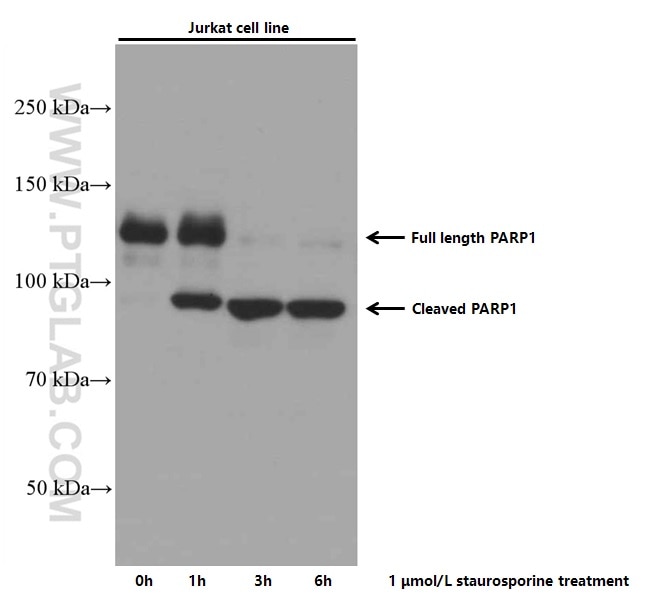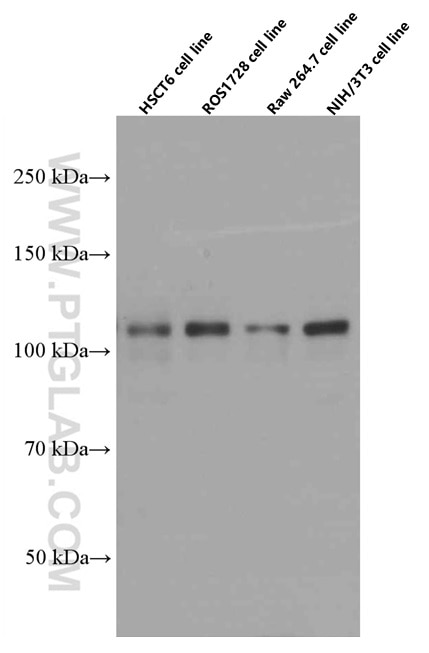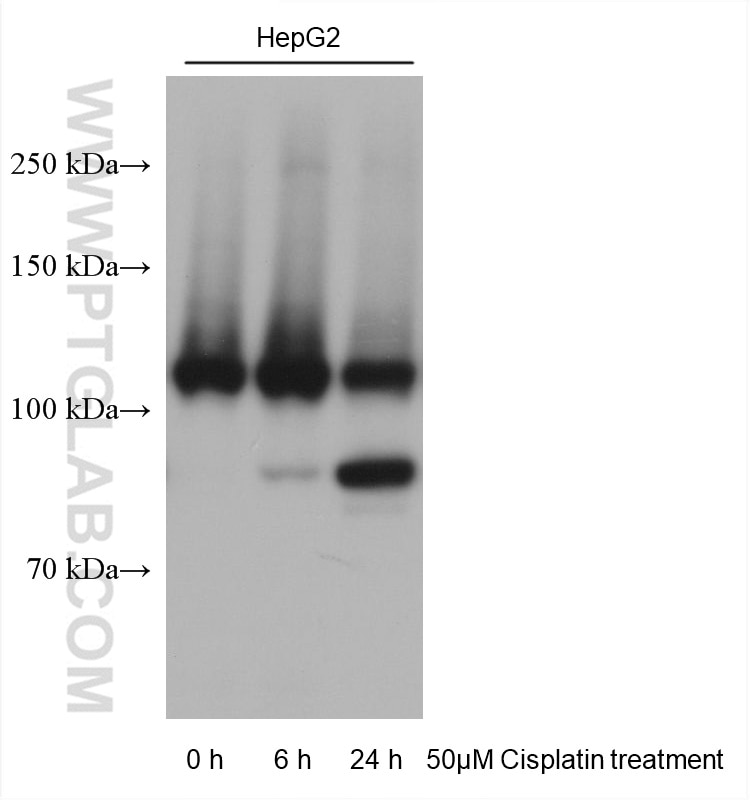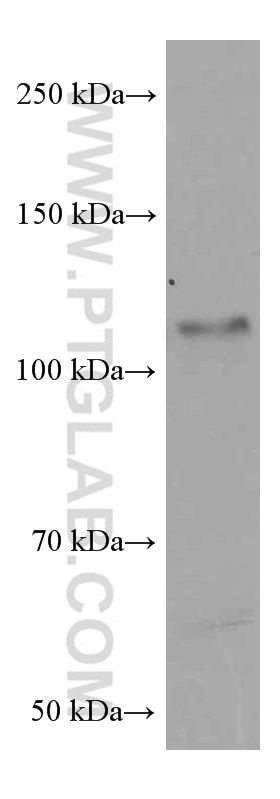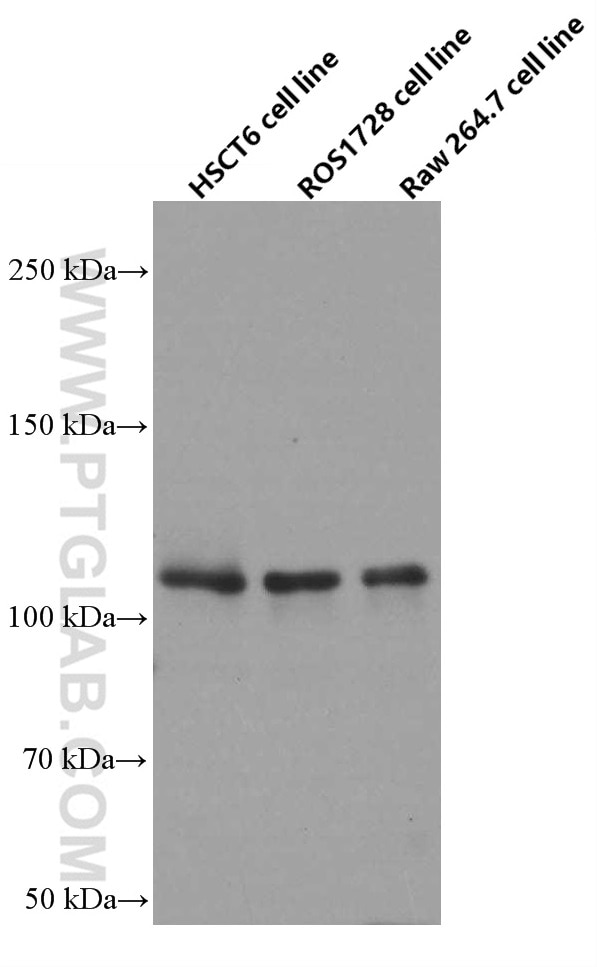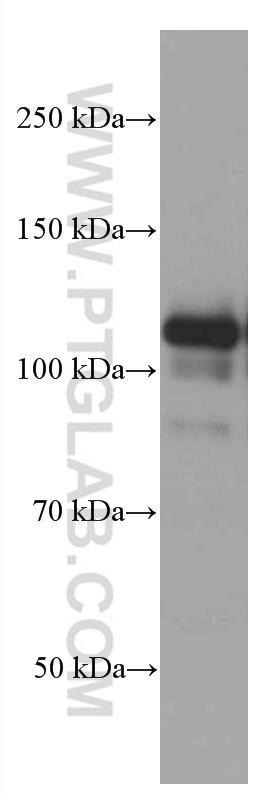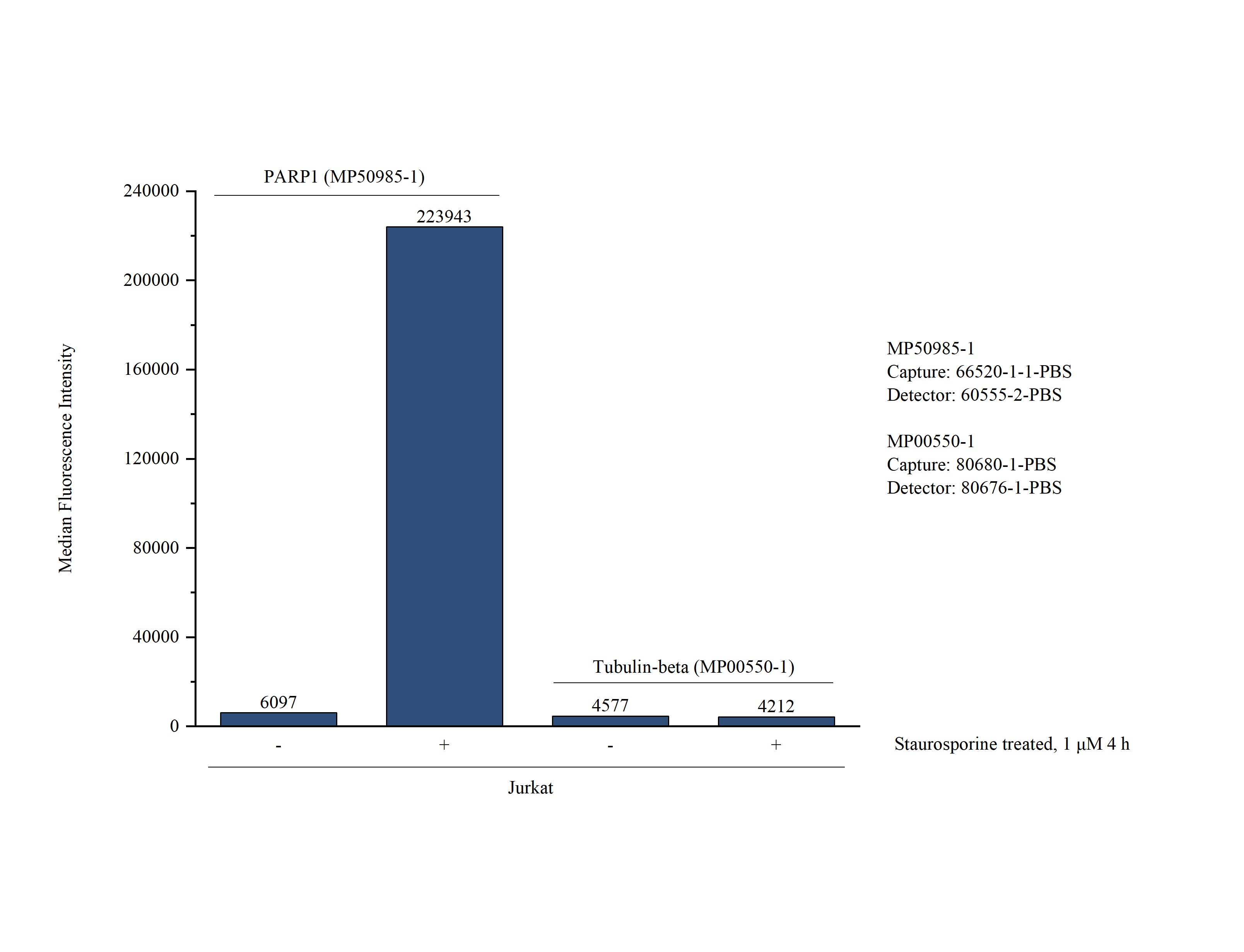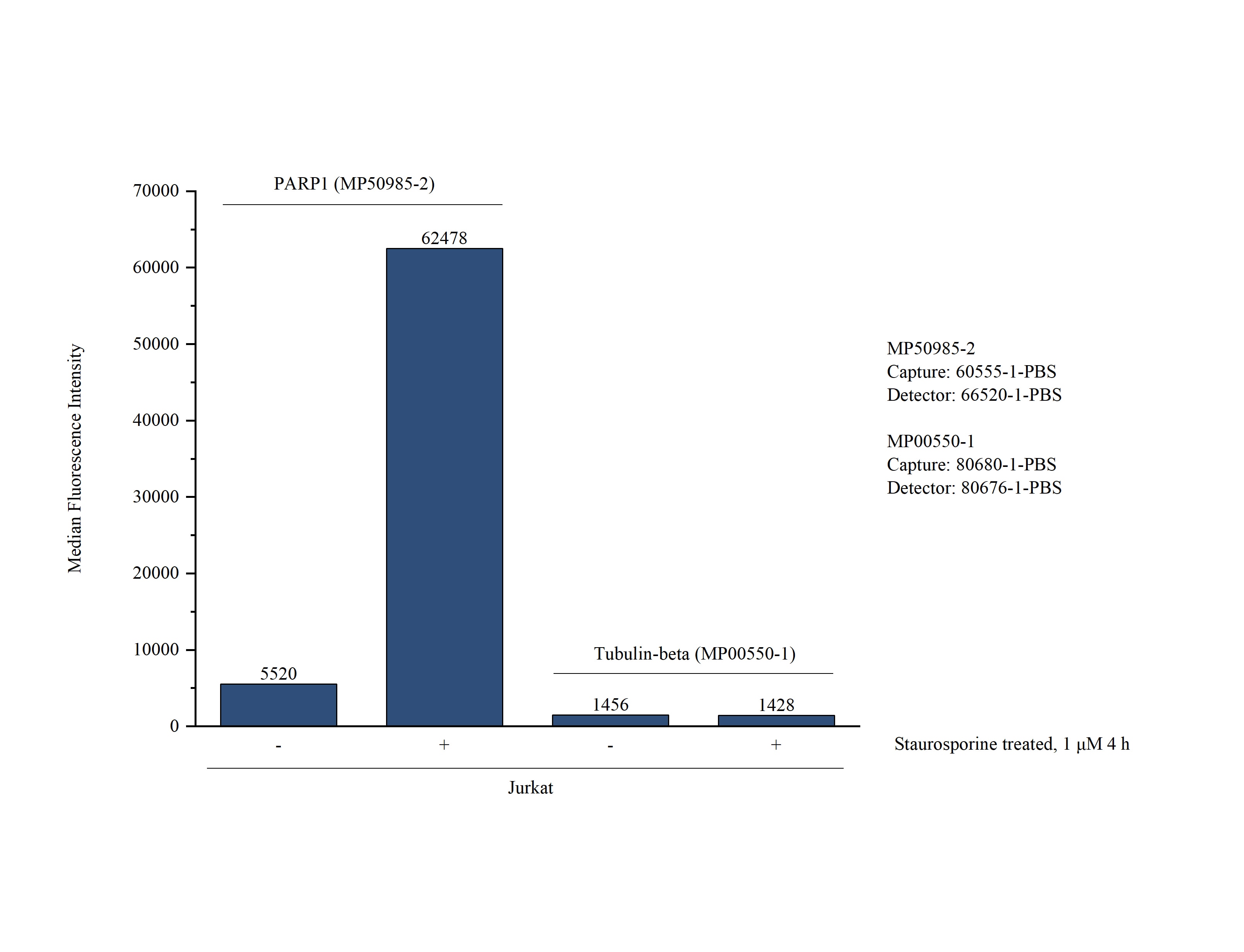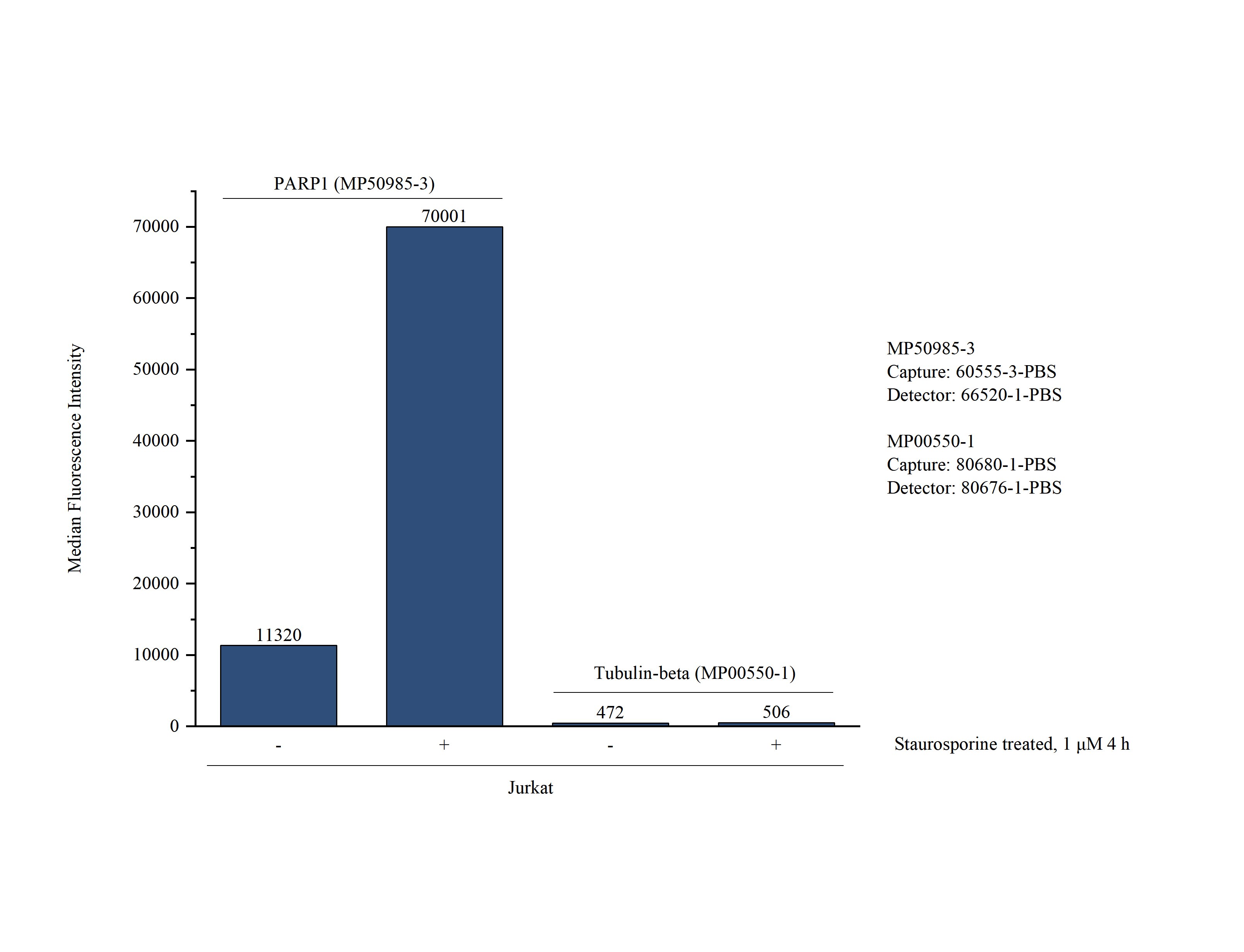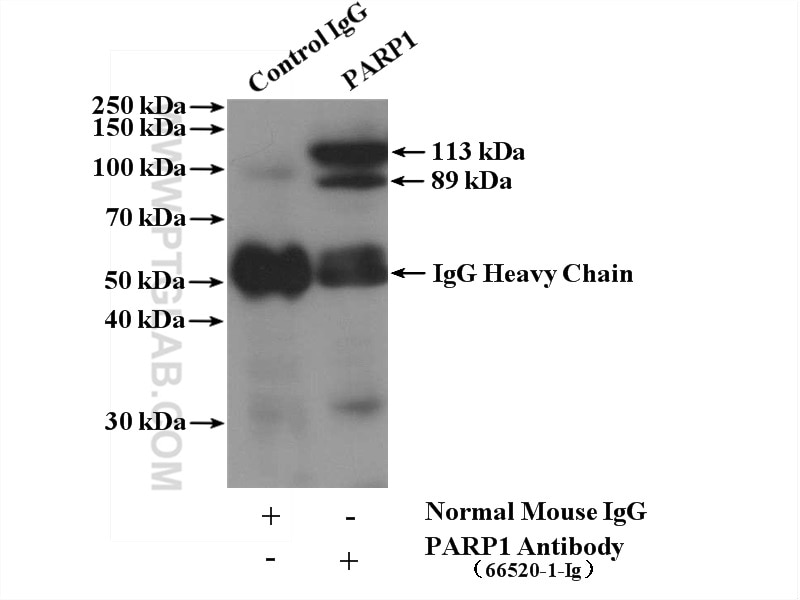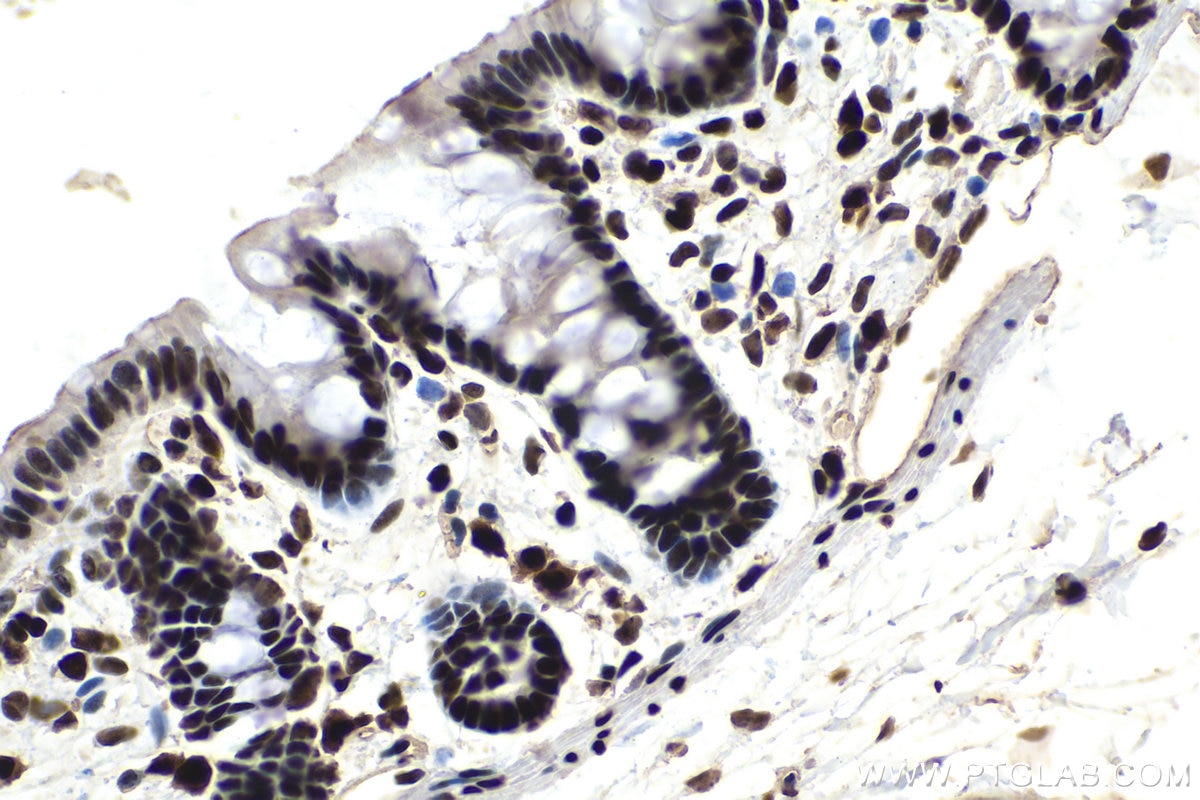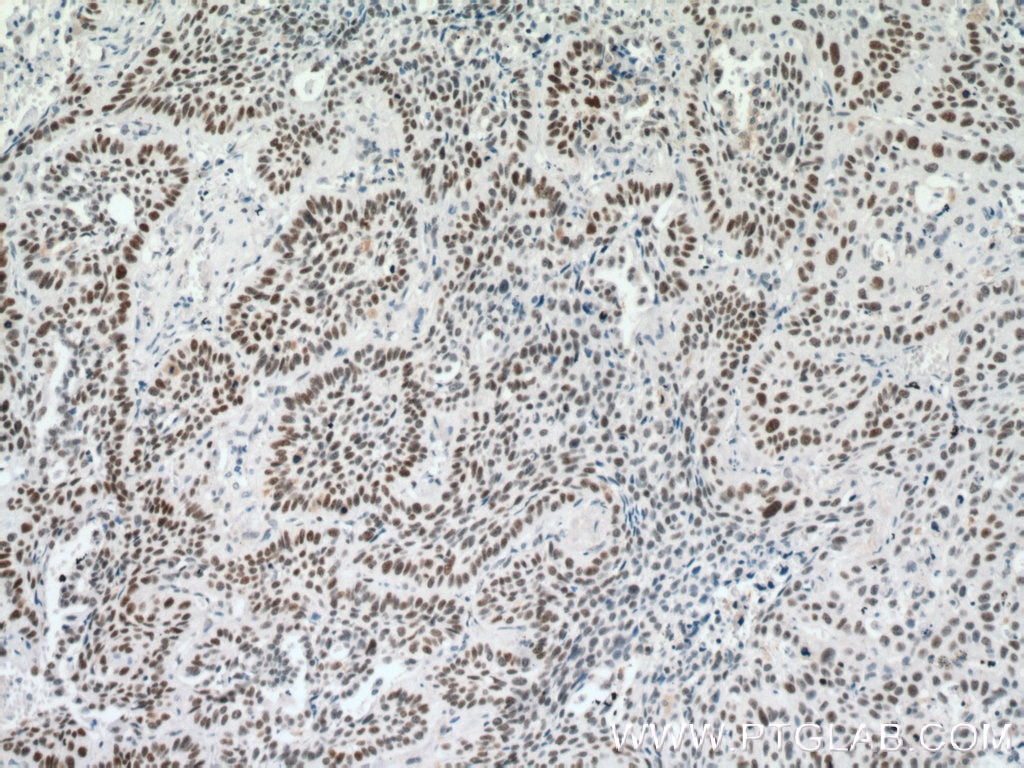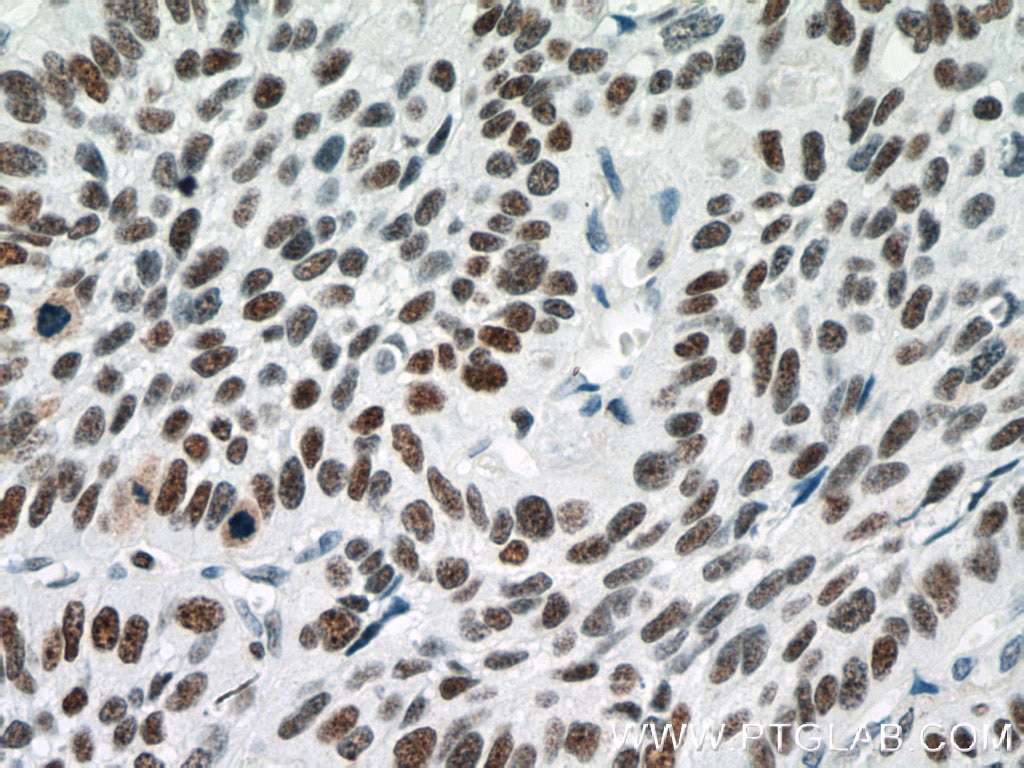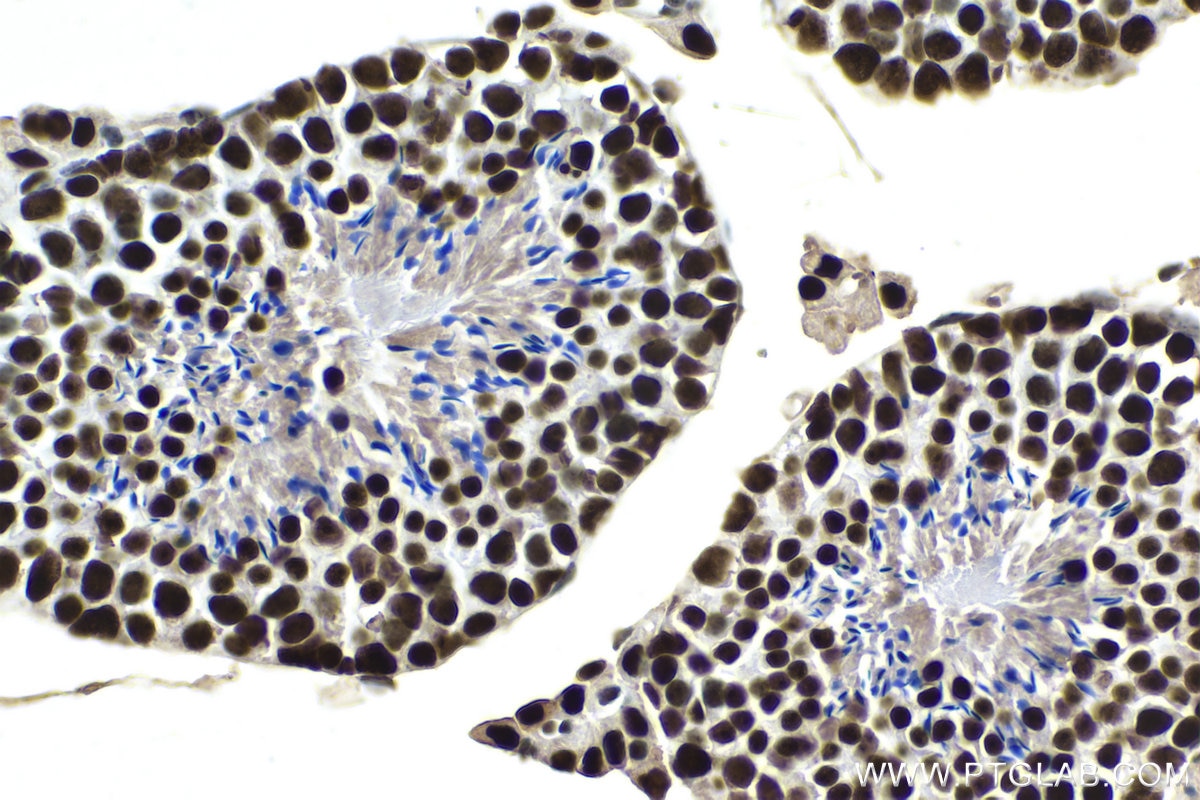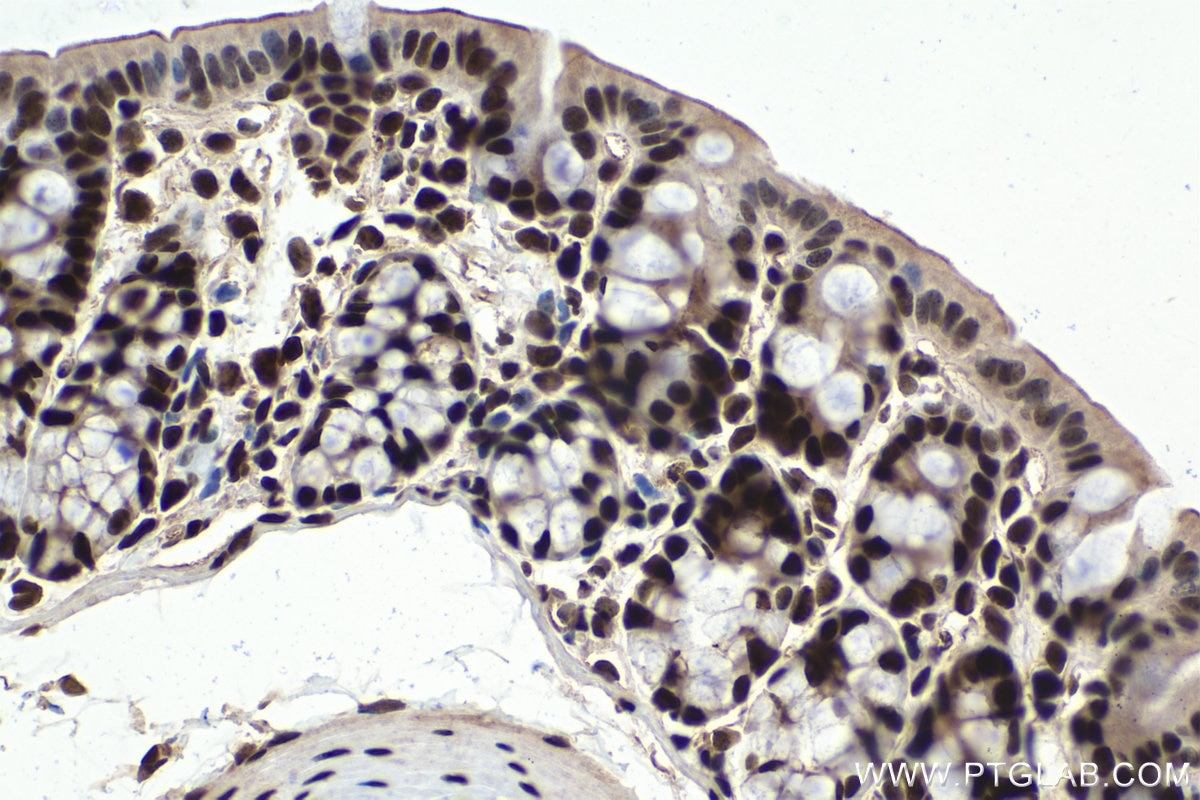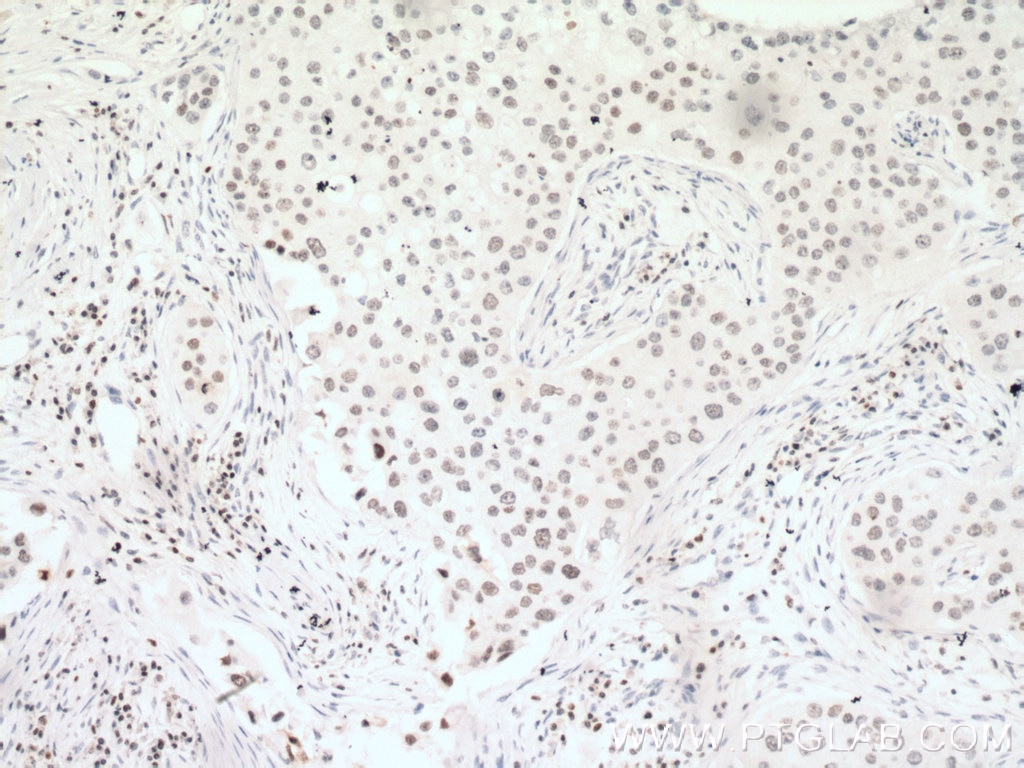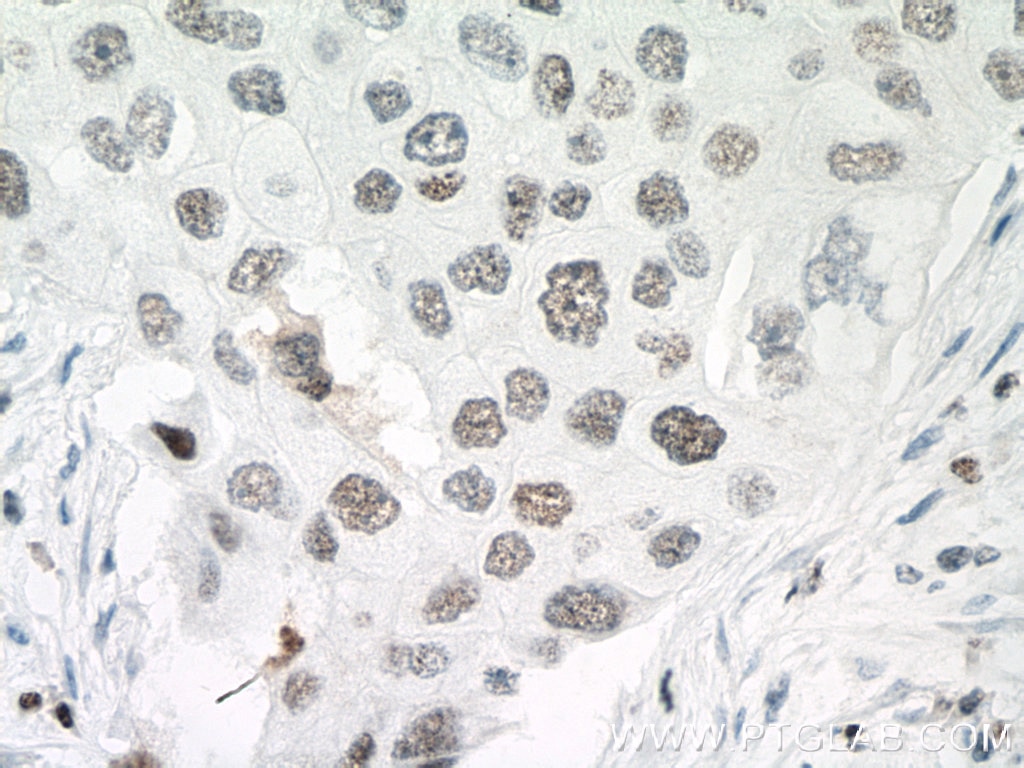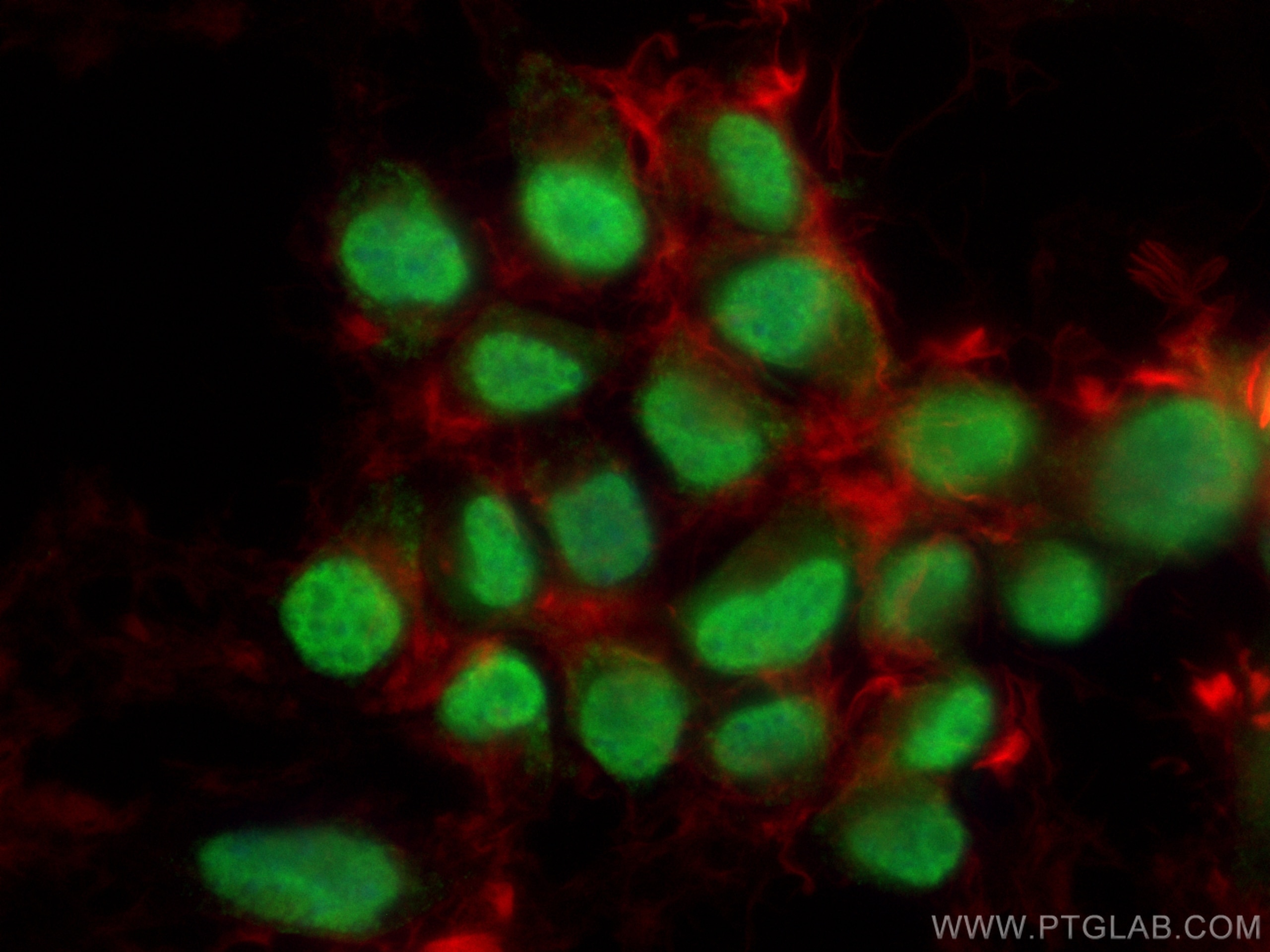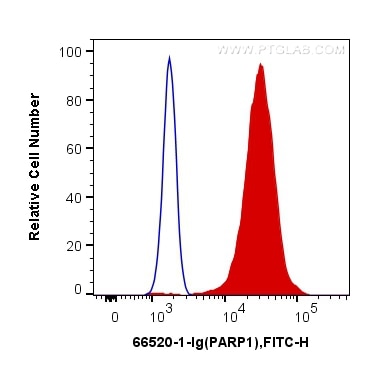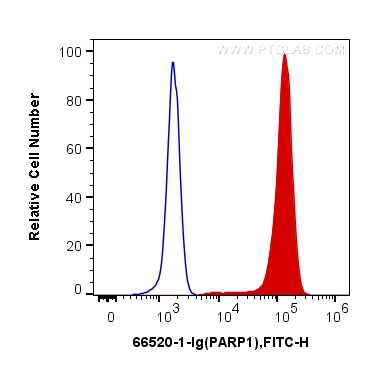- Phare
- Validé par KD/KO
Anticorps Monoclonal anti-PARP1
PARP1 Monoclonal Antibody for WB, IHC, IF/ICC, FC (Intra), IP, Indirect ELISA, Sample test
Hôte / Isotype
Mouse / IgG1
Réactivité testée
Humain, rat, souris
Applications
WB, IHC, IF/ICC, FC (Intra), IP, Indirect ELISA, Sample test
Conjugaison
Non conjugué
CloneNo.
1D7D4
N° de cat : 66520-1-PBS
Synonymes
Galerie de données de validation
Informations sur le produit
66520-1-PBS cible PARP1 dans les applications de WB, IHC, IF/ICC, FC (Intra), IP, Indirect ELISA, Sample test et montre une réactivité avec des échantillons Humain, rat, souris
| Réactivité | Humain, rat, souris |
| Hôte / Isotype | Mouse / IgG1 |
| Clonalité | Monoclonal |
| Type | Anticorps |
| Immunogène | PARP1 Protéine recombinante Ag19173 |
| Nom complet | poly (ADP-ribose) polymerase 1 |
| Masse moléculaire calculée | 1014 aa, 113 kDa |
| Poids moléculaire observé | 113-116 kDa, 85-89 kDa |
| Numéro d’acquisition GenBank | BC037545 |
| Symbole du gène | PARP1 |
| Identification du gène (NCBI) | 142 |
| Conjugaison | Non conjugué |
| Forme | Liquide |
| Méthode de purification | Purification par protéine G |
| Tampon de stockage | PBS only |
| Conditions de stockage | Store at -80°C. 20ul contiennent 0,1% de BSA. |
Informations générales
PARP1 (poly(ADP-ribose) polymerase 1) is a nuclear enzyme catalyzing the poly(ADP-ribosyl)ation of many key proteins in vivo. The normal function of PARP1 is the routine repair of DNA damage. Activated by DNA strand breaks, the PARP1 is cleaved into an 85 to 89-kDa COOH-terminal fragment and a 24-kDa NH2-terminal peptide by caspases during the apoptotic process. The appearance of PARP fragments is commonly considered an important biomarker of apoptosis. In addition to caspases, other proteases like calpains, cathepsins, granzymes, and matrix metalloproteinases (MMPs) have also been reported to cleave PARP1 and give rise to fragments ranging from 42-89-kDa. This antibody was generated against the N-terminal region of human PARP1 and it recognizes the full-length as well as the cleavage of the PARP1.
